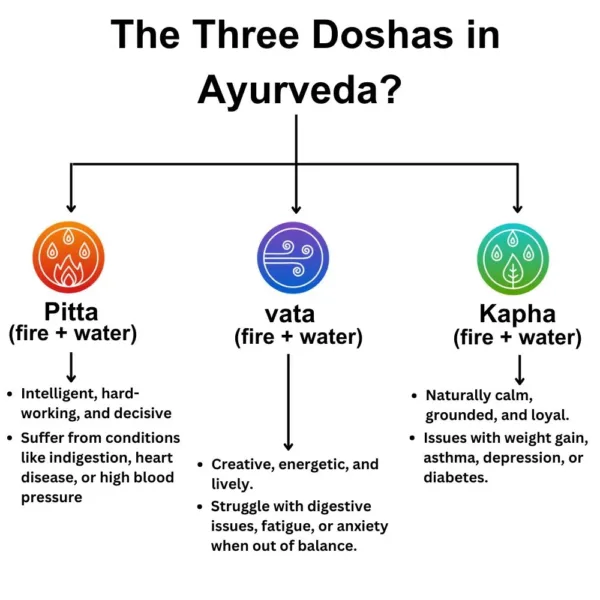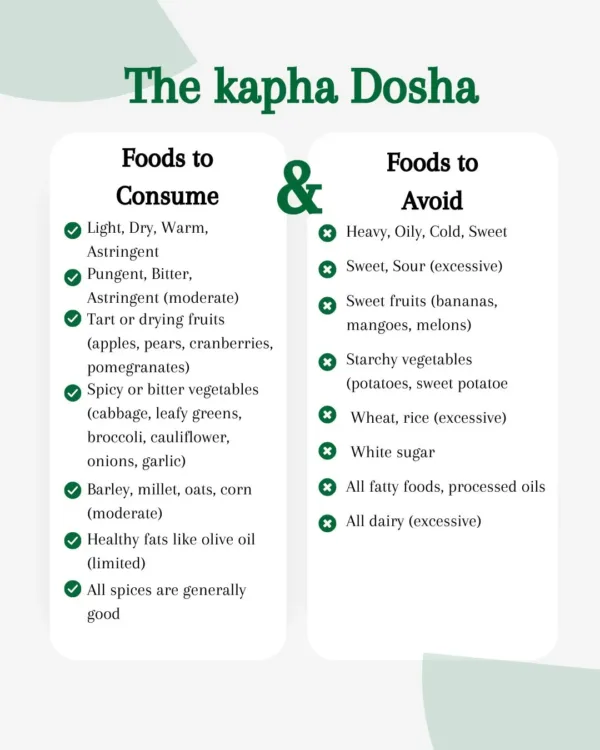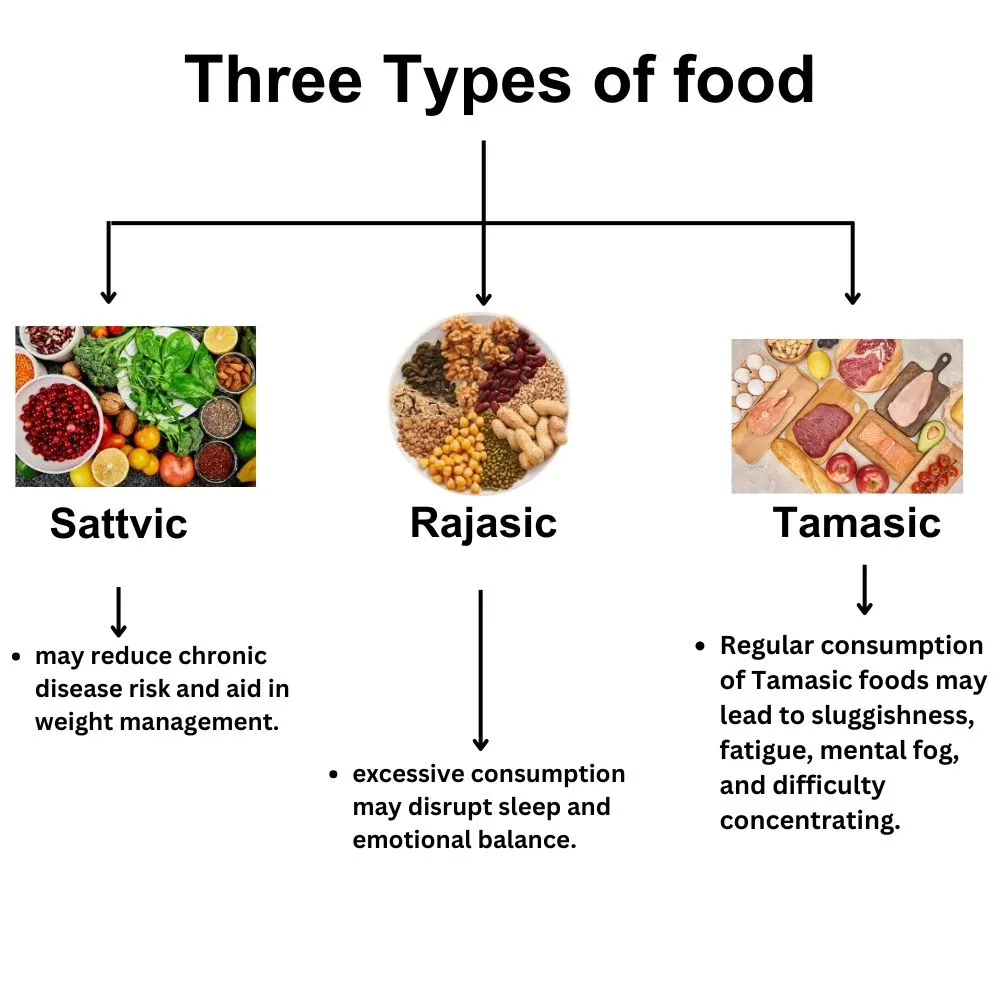
Concept of Eating According to Ayurveda for Weight Loss
Ayurveda, an ancient Indian medicinal system spanning over 5,000 years, offers a unique approach to diet and eating. It’s not about just cutting calories but about understanding your body type, known as dosha. By aligning your diet with your dosha, Ayurveda aims to improve not only physical health but also mental clarity and emotional balance. Key aspects include personalized food choices based on your dosha, creating a balanced diet with all six tastes, focusing on strengthening your digestive fire (Agni) and incorporating seasonal and local foods. For those interested in Ayurvedic Diet Plan For Weight Loss the emphasis on personalized nutrition and digestive health can play a crucial role in achieving and maintaining a healthy weight.
What are the three doshas in ayurveda?
In Ayurveda, eating isn’t just about counting calories. It’s about knowing your dosha, which is like your body’s personality based on elements like air, fire, and water. There are three types: Vata, Pitta, and Kapha, each with its own traits. If you want to lose weight with Ayurveda, you need to know your dosha. For example, if you’re a Vata, your weight might go up and down because of your appetite. If you’re a Pitta, stress might make you eat too much. Kapha types might find it hard to lose weight because their bodies work slower. To get help with weight loss using Ayurveda, you should talk to an Ayurvedic expert who can tell you more about your dosha and how to manage your weight.

Best Foods according to your doshas?
In ayurveda, foods are categorized based on their physical qualities and the way they are said to affect your body. this helps determine which ingredients work best for different doshas. below are some of the foods you should eat based on your specific dosha.
The Vata Dosha
Food To Consume: To balance air and space elements if you have Vata dosha, prioritize sweet and ripe fruits (bananas, mangoes), cooked vegetables (asparagus, spinach), warm grains (brown rice, quinoa), easily digestible mung beans, and healthy fats (ghee, olive oil) with warming spices (cinnamon, ginger) for a grounding and nourishing Vata-pacifying diet.
Food To Avoid: If you have Vata dosha, limit astringent, bitter, and pungent foods (especially raw vegetables like broccoli and cauliflower) as they can exacerbate your air and space qualities. Avoid dried fruits, unripe fruits, sour fruits (like grapefruit), and cold drinks, as they share Vata’s cold, dry, and light characteristics. Additionally, minimize barley, buckwheat, corn, most beans (except mung beans), excessive alcohol, and refined sugars, which can disrupt your Vata balance.

The Pitta Dosha
Food to Consume – Pitta dosha, characterized by fire and water elements, a balanced diet that emphasizes cooling and sweet properties. Embrace sweet or bitter vegetables (leafy greens, asparagus) and sweet fruits (melons, grapes). Choose light, cooling grains like barley, wheat (in moderation), basmati rice, and oats. Easily digestible mung beans and split peas (in moderation) are ideal legumes. Remember, even sweet fruits like mangoes or dates should be enjoyed in moderation to avoid aggravating Pitta.
Foods to Avoid – If you have Pitta dosha, avoid foods that can stoke your inner fire. Steer clear of sour fruits like grapefruit, oranges, and pineapple, as their acidity can exacerbate Pitta’s heat. Similarly, skip pungent vegetables like onions, garlic, radishes, and chillies, and say no to hot spices like chilli peppers and cayenne. Eliminate refined sugars, which can trigger blood sugar spikes, and avoid heavy, spicy, and sour grains like dry oats, millet, corn, and lentils, as these can further aggravate your Pitta imbalance.

The kapha Dosha
Food to Consume – If you have Kapha dosha, incorporating pungent, bitter, and astringent foods (in moderation) can help balance your earth and water elements. Think spicy or bitter vegetables like cabbage, leafy greens, and broccoli, alongside tart or drying fruits like apples and cranberries. Opt for lighter grains like barley, millet, and oats, with corn enjoyed occasionally. Healthy fats like olive oil are good in moderation, and the beauty is, most spices are your friends! These foods, with their drying and stimulating qualities, can help reduce Kapha’s congestion and promote lightness.
Foods to Avoid – To maintain balance with Kapha dosha, avoid foods that amplify its naturally heavy and sweet tendencies. This means limiting sweet fruits like bananas, mangoes, and melons, as their excess sugar can contribute to Kapha’s sluggishness and congestion. Starchy vegetables like potatoes and sweet potatoes should also be enjoyed sparingly. Ditch the white sugar and reduce all dairy products, especially yogurt and cheese, as they can worsen Kapha’s phlegm production. Finally, steer clear of all fatty foods and processed oils, as these can overload your system and hinder digestion. Opting for lighter and drier options will help keep your Kapha dosha in check.

Fasting According to Ayurveda
Ayurveda incorporates fasting practices alongside dietary modifications to promote overall well-being and weight management. Here, we explore two primary approaches to fasting within Ayurveda:
Intermittent fasting (IF)
Intermittent fasting (IF) involves cycling between periods of eating and fasting. This approach offers several benefits. For weight management, IF can help regulate insulin levels and promote fat burning, which is useful in Ayurveda for weight loss. It may also improve metabolic health by giving your digestive system a break, enhancing how your body functions and repairs itself. Additionally, some people find increased energy and focus with IF due to better metabolic regulation.
Popular IF methods include the 16/8 method, where you fast for 16 hours and eat during an 8-hour window. For example, you might eat between 12 pm and 8 pm and fast for the remaining 16 hours, including sleep time. Another approach is alternate-day fasting, where you alternate between days of regular eating and days with very low-calorie intake (around 500-600 calories) or complete fasting. The 5:2 approach involves eating normally for five days a week and restricting calorie intake for the remaining two days. Using these methods can support Ayurveda for weight loss by promoting better eating habits and improving metabolic health
Fasting Based on Doshas
Ayurveda emphasizes personalized fasting based on your dosha. Here’s a brief overview:
- Kapha Dosha (Earth and Water): Individuals with dominant Kapha may benefit from longer fasts (14-18 hours) to manage weight and sluggishness. The Kapha time of day (6 am to 10 am and 6 pm to 10 pm) is believed to be optimal for fasting due to the body’s naturally stable energy during these periods.
- Pitta Dosha (Fire and Water): Pitta individuals might find a 14-16 hour fast effective, ideally done before noon to avoid overheating their fiery nature.
- Vata Dosha (Air and Space): Vata doshas may need shorter fasts (12 hours) to maintain their energy and avoid excessive dryness.
Sattvic, Rajasic and Tamasic Foods
Ayurveda, the ancient Indian system of medicine, views food as more than just sustenance. It emphasizes the energetic qualities of food and their impact on our physical, mental, and emotional well-being. Three primary classifications categorize these energetic influences: Sattvic, Rajasic, and Tamasic

Sattvic foods, representing purity and lightness, include fresh, seasonal, and vegetarian or vegan options like fruits, vegetables, legumes, whole grains such as brown rice and quinoa, nuts, seeds, milk, and ghee (clarified butter). This diet, abundant in prana (life force), energizes the body and mind while enhancing emotional stability. Research indicates that a Sattvic diet, akin to plant-based diets, may reduce chronic disease risk and aid in weight management.
Rajasic foods, characterized by stimulation and passion, encompass spicy, salty, sour, and hot options, including processed foods. While they can provide a temporary energy boost and improve focus, overconsumption may lead to agitation and restlessness. Examples include meat, fish, eggs (in some interpretations), strong spices like chili peppers, garlic, onions, coffee, black tea, and chocolate (especially when overindulged). Moderation is key, as strategic incorporation of these foods can support drive and focus, but excessive consumption may disrupt sleep and emotional balance.
Tamasic foods, symbolizing heaviness and lethargy, include stale, processed, overcooked, or greasy options that are generally considered unhealthy. These foods deplete energy and clarity, causing dullness and inertia. Examples comprise processed foods like frozen dinners and sugary cereals, fried foods, refined sugars, red meat, leftover food that’s been sitting for a long time, and excessive alcohol consumption. Regular consumption of Tamasic foods may lead to sluggishness, fatigue, mental fog, and difficulty concentrating.

Benefits of Sattvic Eating
- Reduced Risk of Chronic Diseases: Plant-based diets like Sattvic eating can lower the risk of chronic conditions such as heart disease, certain cancers, type 2 diabetes, and stroke.
- Lower Saturated Fat Intake: Emphasizes whole plant foods, naturally reducing saturated fat compared to meat-heavy diets.
- High Fiber Content: Rich in fibre, promoting digestive health, regulating blood sugar, and supporting a healthy weight.
- Rich in Phytonutrients: Fruits, vegetables, and legumes provide essential phytonutrients with antioxidant and anti-inflammatory properties.
- Balances Hormones: Mindful eating and avoiding processed foods can lead to improved mood and emotional stability.
- Provides Sustained Energy: Prioritizes easily digestible whole foods that provide steady energy, promoting focus and mental clarity.
- Supports a Calmer Mind: Emphasis on fresh, seasonal, and whole foods promotes a sense of well-being and connection with nature, reducing stress and anxiety.


